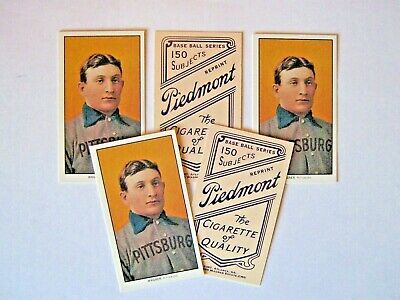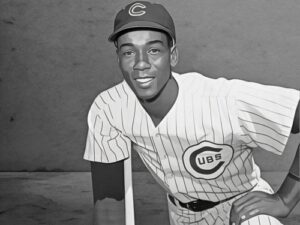A decision by the President of the United States indirectly led to Honus Wagner’s baseball card becoming, at least for a while, the most valuable collectible in sports history.*
The development of baseball cards is closely linked to the emergence of photography. In the late 19th century, as cameras became more capable, photos of baseball players were popular items for advertisers. The first folks to recognize the mass potential for baseball cards was the tobacco industry. There were two reasons for this:
- to capitalize on the popularity of the sport, and
- the cards provided protection for the cigarettes from bending or breaking.
The cigarette and tobacco companies needed good photos for their cards, which led them to invest heavily in photographic technology in the early twentieth century. As the cameras became more sophisticated, photographers got more experimental and adventurous, and the photos got better.
The American Tobacco Company had a near monopoly on the smokeless tobacco industry in the early twentieth century. This meant they didn’t need to advertise, they didn’t need a gimmick to entice customers. As a result they took cards out of their products. That’s when Teddy Roosevelt intervened.
Our 25th president was an energetic bundle of contradictions. On the one hand he loved war and did all he could to coax us into one, on the other hand he fought hard to secure the natural resources of our country. On the one hand he believed Americans should be diligent and pull themselves up by their own bootstraps, on the other hand he feared the large corporations that were increasingly controlling the economy. That’s why he became a “trust buster.” Teddy used his executive power to break up monopolies, including the tobacco monopoly. As a result, American Tobacco Company had real competition, and in 1909 they began printing baseball cards and putting them in their products.
The biggest star in baseball at that time was Honus Wagner, so naturally “The Flying Dutchman” was featured on an American Tobacco Company card. Wagner was, and remains one of the greatest shortstops of all-time. The card series was known as the T206 series, and the company wanted all 524 major league players to be in it. They sent an agent to each club to get written permission. When the agent wrote Wagner asking for permission, Hans declined politely. Wagner did not want his name and likeness associated with tobacco products because he was afraid children would buy them hoping to get his card. Wagner was adamant, but he was such a nice guy that he paid the $10 signing fee that the agent would have gotten had he secured Wagner’s approval.
The American Tobacco Company hadn’t counted on any players refusing to be included in the card set. They assumed every ballplayer would want the publicity and the licensing fee for using their likeness, which was reportedly $75. ATC had started their presses before getting approval: apparently about 200 Wagner cards were produced and placed into products. When they realized Honus wasn’t going to sign a contract, the company halted production of Wagner cards, but some went out to customers.
Fast forward about 30 years and the Wagner card was becoming a topic of discussion among baseball collectors. The baseball card industry hadn’t really taken off yet, but there were a few dozen Wagner cards in the hands of collectors and they were valued at $50, a very nice sum for a small piece of cardboard. But soon, factors accelerated the value of the T206 Wagner. In the 1950s several card companies emerged, including Bowman and Topps, and their ingenuity and a new fan base fueled by television and radio, led to the explosion of the hobby. By the late 1970s, the kids of the 1950s were adults with disposable income, and they wanted baseball cards, lots of them. The Mickey Mantle rookie card was coveted. But the most valuable was the rare T206 Wagner, of which there were thought to be only a few dozen left in existence.
The highest quality T206 Wagner was sold for more than $3 million in 2016. It’s the same card that was once the property of Wayne Gretzky. The card has a magical, controversial history all its own, and I don’t have space to share it here. But the genesis of its incredible value goes back to Honus Wagner himself, the superstar who didn’t want his face on a card that was inside a tobacco pouch.






